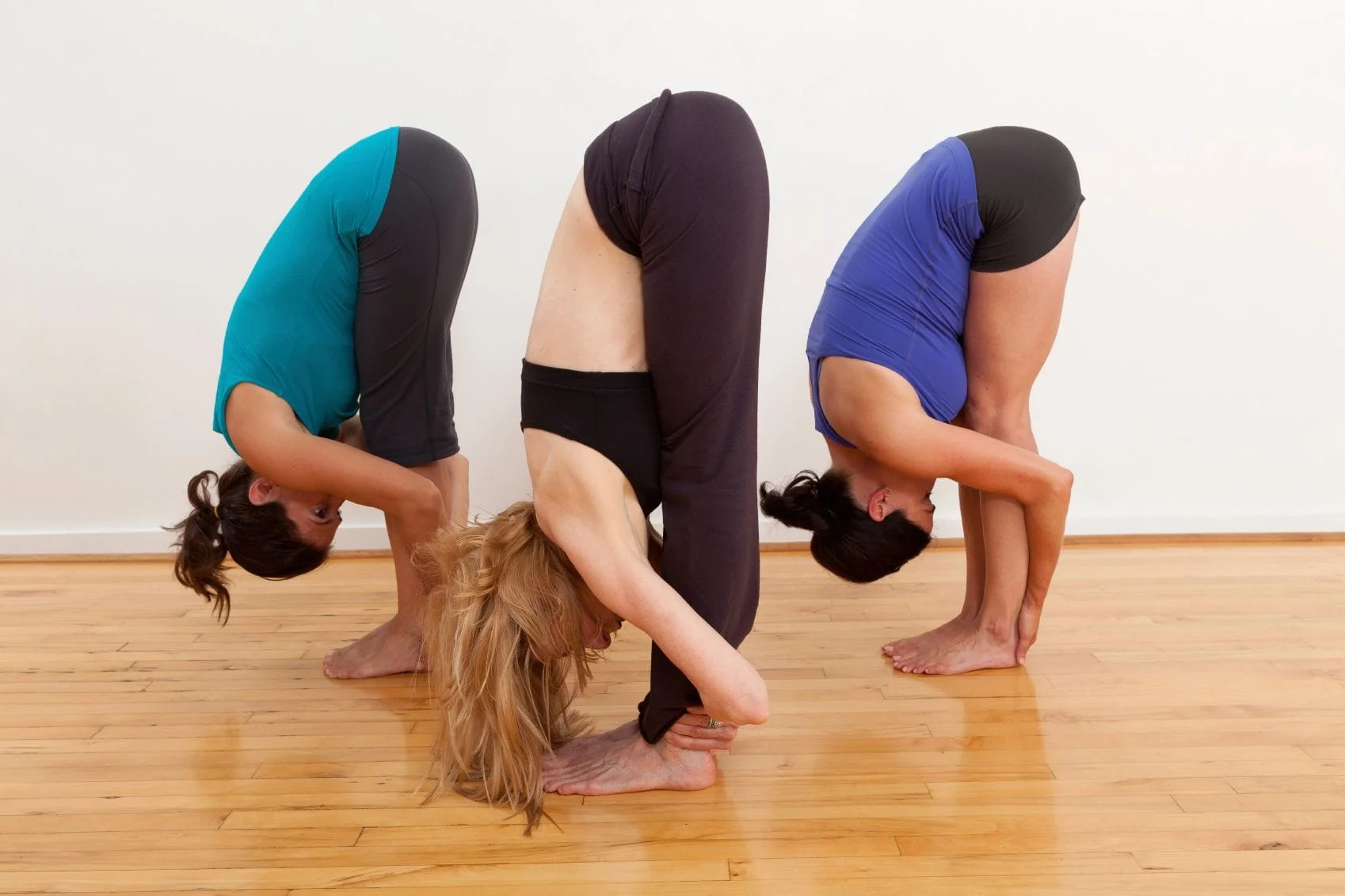In my everyday practice, I observe many of my students breathing
through their mouth. Through my experience I have found that
breathing is very personal. It is very personal because it takes a
lot of attention and awareness to get the body used to breathing a
certain way and experimenting with different breathing
techniques.
Your breath should be natural, especially once you bring it into
your everyday practice. Controlled breathing has many
advantages, from curbing stress from its roots to lowering blood
pressure, and increased concentration. Not only does it keep the
mind and body functioning at its best, it can also promote feelings
of instant calmness and relaxation. It is a great technique to ease
stress in almost all situations, including one of our daily stressors,
our work commute.
Ancient texts of Ayuryoga and Ayurveda has proved that methods
of breathing and meditation is effective in curing many problems
which rise in today's stressful lifestyle. Experts encourage using
the breath as a means of increasing awareness and mindfulness.
According to many traditions, it is the key to attain a zen state of
being. Even yogis swear by utilizing breathing exercises to live a
joyful and healthy life.
But breathing easy isn’t as simple as it sounds. However, a well-
trained teacher can show you the methodology to breathing
exercises and prescribe the right amount of technique. Make
sure to be slow in your practice, as getting the technique right is
primary to achieve great results.
From the comfort of your bed, to your office desk, or any other
place where you catch your mind in a negative state, these six
breathing techniques will instantly help you keep calm.
Sama Vritti
Step 1: It's All About Balance
Sama means equal. Vritti means the state of being.
Right now, our bodies are accustomed to the practice of shallow
breathing.
To start sama vritti, inhale for a count of four, then exhale for a
count of four. Remember to breathe through your nose. This
adds a natural resistance to the breath and is a basic of
pranayama breathing. As you advance, aim for six to eight
counts per breath with the goal in mind: this technique can calm
the nervous system, increase focus, and reduce stress and
anxiety.
Sama Vritti can be done anytime, anyplace. This is one
technique that is especially effective when you catch yourself
creating unlimited thoughts. In other words, if you’re having a
hard time falling asleep, this breath can help slow your mind and
reduce racing thoughts, and help you bring your focus and
concentration to the present situation.
This step is great for the beginner who wants to relax. A count of
10 breaths would be a great way to stop and rejuvenate your busy
day.
Step 2: Nadi Shodhana "Alternate Nostril Breathing"
This breathing technique is used to balance and unite the right
and left hemisphere of the brain. This is also known as a silent
breathing technique. Starting in a comfortable seated pose, hold
your right thumb over the right nostril and inhale deeply through
your left nostril. At the peak of inhalation, pause to close off the
left nostril with your ring finger, then exhale through the right
nostril. Continue this pattern, inhaling through the right nostril, and
closing it off with the right thumb and exhaling through the left
nostril. Slowing the pace of your breath is the key to optimize the
results of this silent breathing technique.
Nadi Shodhana works best during crunch time or anytime you find
it challenging to focus or energize, such as prior to meetings in
the mid-afternoon. Nadi shodhana is said to “clear the channels
and meridians in our body and make people feel more relaxed if
done with control. On a slower pace, this is a great sleep
inducer." It’s almost like a cup of warm milk before you fall
asleep!
This practice is great for a beginner to start focusing on following
his or her breath. This technique is allowed throughout pregnancy
and can be very beneficial in relaxing and cleansing. It also aids
in improving blood circulation. While practicing this breathing
technique, concentrate on keeping the breath quiet, while focus
on feeling the coldness in your inhale and the warmth of your
exhale.
Step 3: Abdominal Breathing / Ocean Wave / Sohum Meditation.
With one hand on the chest and the other on the belly, take a
deep breath in through the nose, ensuring the diaphragm (not the
chest) inflates with enough air to create a stretch in the lungs.
Pause 2-3 seconds after inhalation and exhalation. Step 3 is
very similar to baby breathing . A round of 8-10 deep, slow
breaths per minute for a minimum of five minutes each day can
result in lower blood pressure and a tension-free lifestyle. This
breathing technique is also very helpful in increasing lung
capacity and improving digestion. It also aids in regulating the
natural rhythm of your heart.
This breathing technique works great before tests, interviews, or
any stressful event. Though it can seem slightly hard in the
beginning to control the breath, be patient and the body and mind
will help train the breath control.
Anyone can enjoy this ocean wave of breathing. Also great for a
beginner, just imagine an ocean wave splashing on the shore and
retracting. In addition, this is great for pregnant goddesses to
nurture their growing little one, as this ensures in improving
oxygen absorption and detoxes your whole body.
Step 4: Anuloma Viloma (Intermediate level of Nadi Shodana -
See Step 2)
Anuloma Viloma should be done on an empty stomach, preferably
early in the morning or mid-afternoon before you reach for that
cup of caffeine!
This breathing technique is very similar to alternate nostril
breathing. Here, the air is forced in, instead of in a controlled
slow-paced breathing. Let your breathing be heard loud. To
begin, we start in a comfortable seated posture. Before you start,
use a tissue to blow your nose to remove excess mucus. Begin
with closing your right nostril using your right thumb and lifting
your right elbow in line with the right shoulder, parallel to the floor.
Now, as you force inhale through your left nostril, a gush of a
noisy breath is pushed in immediately. Close your left nostril with
your ring finger to exhale out of your right nostril, then followed by
an inhale. This is a fast paced nadi shodana. In this technique,
your breath is pushed to clean and clear your lungs, as this
increases your heart rate.
I call Anuloma Viloma, cardio work out for ancient yogis. Beware,
as this is an intermediate level of breathing, this technique can
make you feel light headed
This breathing exercise is great to begin your day! It's like playing
upbeat music to dance to and having an expresso shot, all
together. It is highly energizing! According to ancient texts, this
heals all forms of internal disease without medication. Many great
benefits can be seen when anuloma viloma is practiced regularly.





